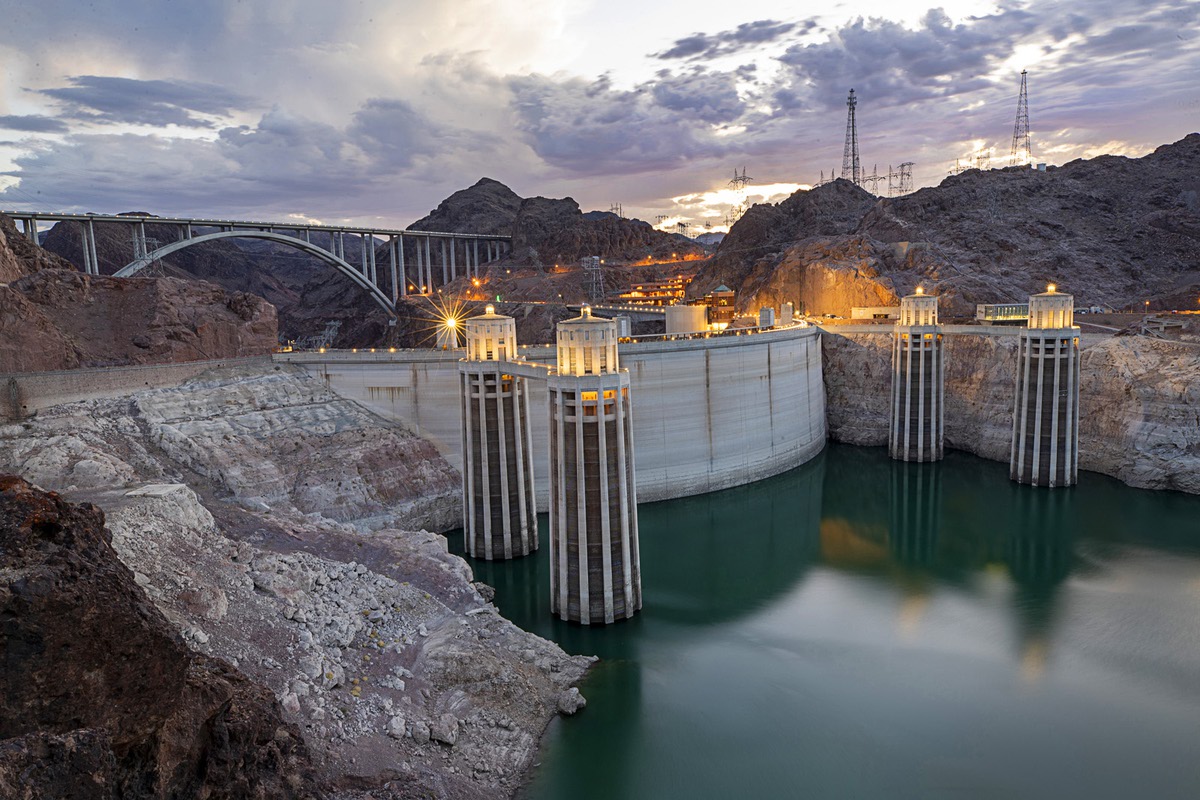
Everything about the Hoover Dam, touted as an engineering marvel of the 20th century, is immense. How massive? The dam, located just southeast of Las Vegas, where it straddles the Nevada-Arizona border and tames the powerful Colorado River, is 726 feet tall and 1,244 feet long.
Construction required more than 4.3 million cubic yards of concrete. The foundation of the dam is 660 feet thick, nearly the length of two football fields.
Now the 89-year-old building is ready for some hefty upkeep, and legislation filed this week in Congress hopes to free up money for some of the necessary upgrades.
Gail Bates, assistant director of hydropower for the Colorado River Commission of Nevada, said the Department of the Interior had $150 million in maintenance scheduled for the next 10 years at Hoover Dam. The cost to the federal government of building the dam in the 1930s was $49 million, the equivalent of just over $1 billion today.
One of the most essential projects is replacing the gate stems that raise and lower the dam’s gates, bringing water into the dam and toward the 17 hydroelectric turbines that provide electricity for millions of people in the American Southwest. According to the agency, the renovation is projected to cost $19 million over the next six years.
“If we can’t raise and lower the gates, then we have a real problem because we can’t get water into the turbine and can’t produce power,” Bates said.
The bipartisan Help Hoover Dam Act would provide the Bureau of Reclamation with the ability to spend $45 million in “stranded funds” in the Colorado River Dam Fund to pay for operating, maintenance, and replacement projects at Hoover Dam. All six members of Nevada’s federal delegation have signed onto the proposal as cosponsors.
In 1999, the Western Area Power Administration, a U.S. Department of Energy agency that sells the energy generated by the Hoover Dam, started collecting about $2 million annually from entities like the Colorado River Commission, Southern Nevada Water Authority, electrical districts, Arizona, and others that have contracts related to the Hoover Dam.
The funds were initially put aside for post-retirement benefits for Hoover Dam personnel, but under the proposed law, they will go toward upkeep, enhancements, and replacement of aged equipment at the dam.
The retirement benefits have since been paid through other laws. Meanwhile, the Western Area Power Commission continued to collect the $2 million payments over 24 years with no plan from the Department of Energy or the Bureau of Reclamation for their use, said Eric Witkowski, the executive director of the Colorado River Commission of Nevada.
“You have two different agencies, and they couldn’t agree on how these funds should be handled,” Witkowski said. “What this act will do is give (the Bureau of Reclamation) clear authority from Congress to partner with the contractors to recover and utilize these stranded funds,” Rep. Susie Lee, D-Nev., told the Sun.
She cosponsored the legislation with colleagues Reps. Dina Titus, D-Nev., Steven Horsford, D-Nev., and Mark Amodei, R-Nev., in the House. The Senate version of the bill was presented by Sen. Kyrsten Sinema, I-Ariz.
Sen. Catherine Cortez Masto, D-Nev., is a cosponsor of the Senate version, and her office, in a statement, said the stranded funds have been inaccessible “for decades due to bureaucracy and federal red tape.”
When considering 40 million people depend on the Colorado River for water and 1.3 million rely on the Hoover Dam for electricity, the proposal to invest funds will help “save taxpayer dollars, protect Western water and other natural resources, and strengthen a key source of Nevada’s energy,” Cortez Masto’s office said.
Lee said the dam’s major functions, in order of significance, were flood control along the Colorado River, followed by drinking water and power generation.
“That impacts everyone who relies on the dam,” Lee said. “That impacts the 1.3 million people who rely on the dam for power; it impacts the 40 million people who rely on the Colorado River for water. So that’s why this is a bipartisan, bicameral piece of legislation.”
Bates said the Bureau examines the gate stems every year, and they still operate, but the project is identified as more critical because the gates protect both the dam and the people within.
“For example, we don’t want the gate stems to get stuck open,” Bates added. “We need to be able to regulate the flow of water that goes in and out of the facility.”
Another significant project would replace components of the dam’s generators over a period of nearly 10 years. The project will cost an estimated $29 million through 2033, Bates said.
“That project, basically, is to make sure all of our generators are producing power efficiently,” Bates added. “Eventually the equipment just wears out.”
The budget also includes $14 million over the next 10 years to rebuild plumbing throughout the dam’s generating plant.
“The plant is very old, and those pipes get rusted out and break,” Bates added. “And so preventive maintenance needs to be done on pipes all the time.”


Leave a Reply